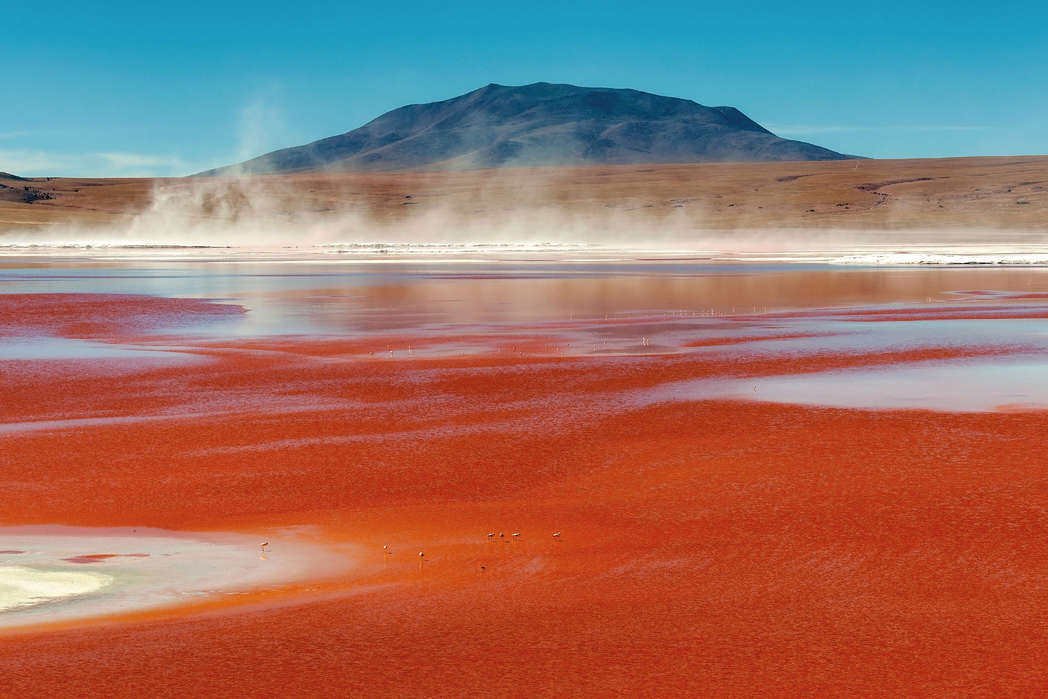Geothermal at the heart of energy transition
Geothermal at the heart of energy transition
06/09/2019 – Geothermal / Energy
It’s the oldest form of renewable energy and the most firmly established at Vallourec. It harnesses the Earth’s heat, offers numerous advantages and opens up many new possibilities.
How does it work?
Geothermal energy harnesses the heat of Earth’s crust. Wells are being drilled all around the world, especially where geological conditions favor the highest temperatures. The objective is to inject fluids, which are heated on contact with the Earth’s rocks, then returned to the surface at a high temperature, either to produce direct heat or to drive the turbines in an electric power plant. The temperature rises (by an average 3 °C per 100 meters) as the well gets deeper, producing different kinds of geothermal energy.
Less deep installations (a few dozen meters and up to 30 °C) are used to power individual heating and cooling systems. A heat pump is all you need for what is known as “very low energy” geothermal. At the opposite extreme, “medium to high energy” geothermal descends as far as 5,000 meters, heating the fluid to around 140 °C for use in electricity generation. This is known as deep geothermal and requires wells with tubes that can resist extreme temperatures and corrosive environments.


Geothermal around the world
This near-inexhaustible renewable resource is not intermittent like wind power, and its price is stable, unlike with oil and gas. Geothermal is proximity energy with limited environmental impact, and around twenty countries have included it in their energy transition. The United States have one of the largest installations of this kind in The Geysers, north of San Francisco, where 350 wells power 21 electric power plants. Geothermal accounts for 17% of the electricity generated in the Philippines, the world number two, which benefits from being in a geological rift zone. This extends as far as Indonesia, which boasts 40% of worldwide reserves and is pursuing numerous drilling projects. Kenya, the African leader in geothermal, shows immense potential, especially in the Great Rift Valley, and is aiming to generate 5 gigawatts by 2030. In Europe, the record is held by Iceland, where geothermal represents 30% of electricity generated.
Vallourec: 30 years of experience and all the solutions
To support its customers in their energy transition, Vallourec is accelerating development of renewable energies, particularly in geothermal, where its experience is widely recognized. The Group offers the whole range of tubular solutions needed to establish wells and operate them in an efficient and sustainable way. Its products are especially suited to the challenges associated with this energy source, such as high temperature, corrosion and unstable geological formations, and this is reflected in successes in Europe (in Munich and Alsace) and Africa (in Djibouti). Vallourec expects to sell 7,000 metric tons destined for geothermal projects in 2019. New prospects are also emerging in Southeast Asia, where Vallourec is well positioned in the highly promising Indonesian market.
Focus on initial installations
The Munich municipality has set itself the goal of meeting 100% of the city’s district heating requirements through geothermal energy by 2040. The project is currently under construction and includes six deviated wells, each around 3,000 meters deep and 4,400 meters long, all drilled at a single site in the city center. It contains almost 4,000 metric tons of Vallourec OCTG tubes and their high-strength VAM® connections.
The Lake Assal salt lake lies in western Djibouti at the top of the Great Rift Valley, a region well known for its seismic and volcanic activity. The drilling program to harness this energy is already in full swing. Four wells will extract concentrated sea water heated to 305 °C from a depth of 2,500 meters, where the temperature can reach 360 °C. Vallourec is providing its OCTG and VAM® solutions, which are tested to withstand high pressures and guarantee the highest level of water tightness.


